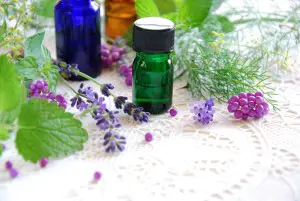Artificially flavored, naturally flavored, you’ve seen all the food labels out there. Deciding on what is safe and not safe can be quite the chore. But that’s not what we’re discussing today. We’re talking about organic food grade flavoring ingredients that you can add into your own home recipes.
More specifically, what we’re going to discuss is the use of food grade essential oils for flavoring your meals.
Before we get rolling, please note that all essential oils are not safe for internal consumption. There is certainly a debate over whether they, as a whole, can even be consumed at all. Some say they can, some say absolutely not. Not only are some particular oils not edible, but some entire brands may not be safe for consumption. In short, always check the label!
[amazon box=”B06ZXZCVHQ”]
Natural ingredient flavors for your food recipes
That being said, assuming you are using the right brand and oil, they can be used internally. And not only will they add to the flavor of your foods, they can provide a number of therapeutic benefits as well.
Believe it or not, many oils naturally occur in a range of food items – everything from nuts to herbs to spices and vegetables. In fact, most of us take in small traces of essential oil in our food. A couple notes on this:
- Some oils are included as flavorings for pickles, candy, ice cream and more.
- The oil in food constitutes just about one percent – equivalent to around a drop per day.
- They are fully blended into the food to deliver extra flavor.
- When acting as a natural health benefit, it must involve a significantly larger quantity of oil.
[amazon box=”B06XRLR9RQ”]
How to use natural flavoring for cooking
 Essential oils are found in many different types of plants, including roots, stems, seed, and flowers – making them a natural and organic flavoring ingredient to enhance your food recipes. What’s great about using essential oils in your food is the versatility. Mixing and matching various products in your recipes can quite invigorating. While there are countless ways to incorporate these organic products in your cooking, here are just a few examples:
Essential oils are found in many different types of plants, including roots, stems, seed, and flowers – making them a natural and organic flavoring ingredient to enhance your food recipes. What’s great about using essential oils in your food is the versatility. Mixing and matching various products in your recipes can quite invigorating. While there are countless ways to incorporate these organic products in your cooking, here are just a few examples:
- Desserts & candies: Use peppermint, lemon, and wild orange.
- Sauces, soups, & other savory foods: Use marjoram and thyme.
- Various sweets like chocolate: Use lavender and marjoram.
In terms of how to cook with these oils, consider these tips. For savory cooking:
- Simmer bolder-flavor oils in soups to provide a little extra flavor.
- Oftentimes, only one drop can replace a teaspoon of herb or spice.
- For bold taste, use oils such as marjoram, rosemary, and oregano.
For a delicious chocolatey dessert, consider this very simple recipe:
- Take about ½ teaspoon per pound of chocolate.
- Add in lavender or your chosen oil to melted chocolate and mix the solution.
- When incorporating floral oils like bergamot or lavender, just a small quantity is needed (like one or two drops). You can always start with smaller amounts and increase as needed.
[amazon box=”B01J4HAH84″]
To be safe, use Pure Therapeutic Grade
While there is certainly some ambiguity when talking about “therapeutic grade” essential oils (there’s no overarching organization to label them), one thing’s for sure: You can’t go wrong with a brand that is Pure Therapeutic Grade (PTG).
Just about anyone can claim to be “therapeutic grade.” But Pure Therapeutic Grade? It’s an enduring process that only the best are willing to jump through. And particularly when consuming essential oils internally, you want to ensure that you are using only the safest solution. Furthermore, regardless of the brand you want to be sure that you are consuming only oils that the manufacturer recommends for internal consumption.
Therapeutic grade oils can offer a range of oils that can be used internally – making them great for organic food flavorings.


